
All categories
Featured selections
Trade Assurance
Buyer Central
Help Center
Get the app
Become a supplier

(1275 products available)
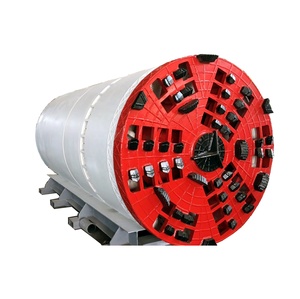

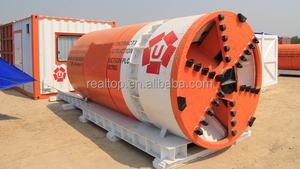



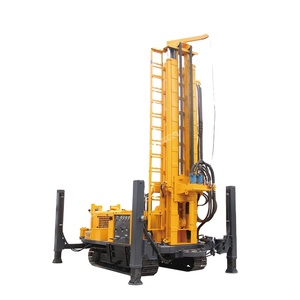








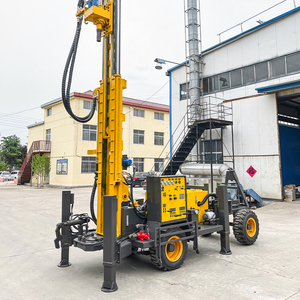









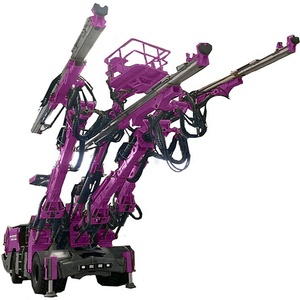


























A tunnel boring machine (TBM) refers to a huge digger used to excavate tunnels through various soil and rock mixtures. Many TBM designs exist to achieve different tunneling goals more efficiently.
Earth Pressure Balanced TBM
The EPB TBM suits tunnels dug through soft or cohesive soil. An EPB TBM has a front shield that creates working pressures to prevent soil saturation or cave-ins. The TBM's cutting wheel turns the soil into excavated material. Then, an auger or conveyor belt removes the material from the tunnel.
Hard Rock TBM
A hard rock TBM produces tunnels in solid rock formations. Instead of using a circular cutter head to excavate soil, this type of TBM uses discoid or diametric cutters to break Hard Rock. After excavation, other machines in the TBM's train support tunnel lining.
Like other types of TBMs, hard rock TBMs use a thrust system to push themselves forward as they dig tunnels.
Open Face TBM
The open-face tunnel boring machine digs tunnels through soil or rock with adequate external support. An open-face TBM has an unclosed front section that exposes the cutting head. It supports the front section with pre-injected concrete, steel frames, or wooden supports. This tunneling machine works in places like the ground level and doesn't suit regions with unstable soil or rock. Compared to TBMs with closed faces, the open-face offers a cheaper tunneling solution. However, it lacks pressure control and excavation protection.
Different types of tunnel boring machines feature distinct specifications depending on what they are designed to do. While the following specifications are common, they may vary with each tunnel-boring machine.
Maintaining a tunnel boring machine is as important as its specifications. How the machine is handled determines its longevity. Here are a few important tunnel boring machine maintenance tips to consider:
The creation of tunnels is increasingly becoming a core focus area worldwide as countries look at sophisticated systems to decongest traffic. There are many applications for tunneling machines in creating tunnels without disrupting the landscape.
Considering the following factors, investing in the right tunnel boring machine will be more accessible.
Project requirements analysis
First, determine the features and specifications of the machine required for the job. The project's diameter, length, soil composition, geological structure, and pressure from overlying ground or surrounding water must be considered when selecting the right boring machine.
TBM types
Buyers should understand the features of each TBM type so they can make an informed decision. The Earth Pressure Balanced Machine and Shielded Machines are ideal for cohesive and non-cohesive soil; the Mixshield works well when interacting with water and soil. The Slurry TBM is a solid option in difficult geological conditions. The Single Shield TBM is a cost-effective option when moving sand, gravel, cobbles, or boulders. In places where the tunnel must curve or where space is limited, the Random Cutting Head TBM is a good option. In areas where it isn't possible to use excavated material as a single shield, Replacement Heads PB machines work well.
Machine size
The size of the tunnel needed and the diameter of the tunnel boring machine impact will be more than project costs and deadlines.
The TBM will need to be disassembled into manageable parts and transported to the launch site. Once it arrives on-site, it will need to be assembled and launched.
Budget and supplier selection
These factors will impact budget constraints, such as assembly and transportation costs, rental or purchase, and any long-term guarantees and support services for the machine. Choosing a manufacturer with a solid reputation and extensive experience in the industry is essential. The international standards certification and track record for supplying durable, reliable, and high-quality tunneling equipment with excellent after-sales support should be considered.
Q1: How does a tunnel boring machine work?
A1: TBMs excavate tunnels by using a circular cutterhead that rotates and moves through the ground. As the cutterhead advances, it cuts the earth into smaller pieces. The fragmented material, or muck, is then conveyed out of the tunnel through systems such as belts or pipes. Once the tunnel is excavated, support and lining materials are installed simultaneously to stabilize the tunnel.
Q2: What are the benefits of using a tunnel boring machine?
A2: Using a TBM offers several advantages. TBMs can excavate large and consistent tunnel diameters faster than other methods. TBMs can also bore tunnels at great lengths without needing intermediate shafts. In addition, TBMs can efficiently bore through different types of soil and rock. Other benefits of using a TBM include better tunnel support, lower project costs, and reduced impact on the surrounding environment.
Q3: What are the limitations of a tunnel boring machine?
A3: The main limitation of a TBM is its high construction and maintenance costs. The initial cost to manufacture and set up a TBM for a project can be prohibitively expensive. Other limitations include lengthy preparations for tunneling and constraints when boring through certain geological conditions.